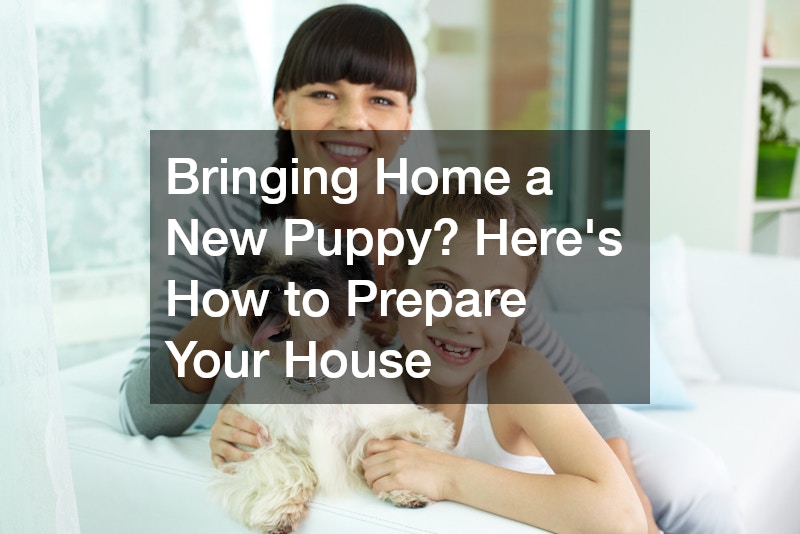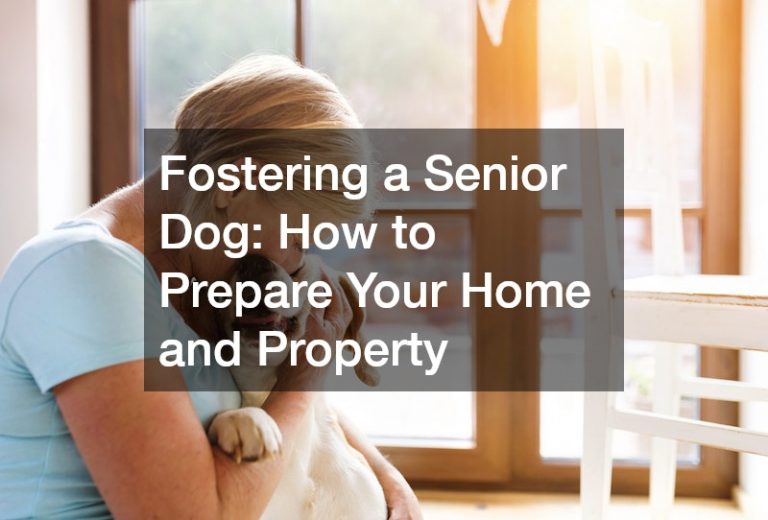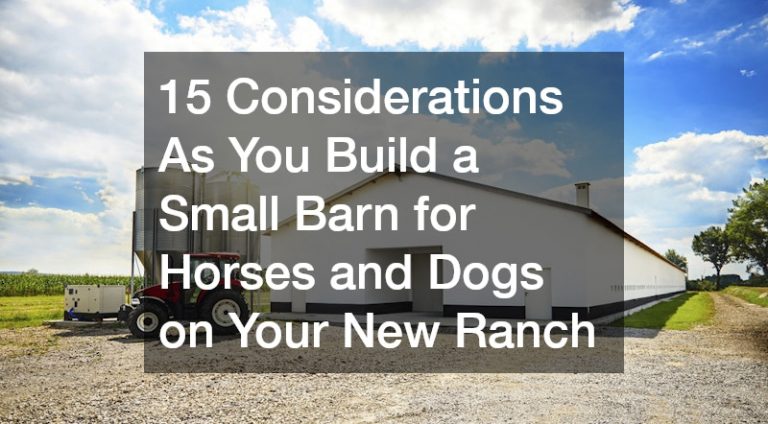Welcoming a new puppy into your home brings a mix of love, joy, and a bit of chaos. However, to ensure a smooth transition for both you and your furry friend, it’s essential to prepare your home before the big day. From dog-proofing your living space to setting up feeding stations, this guide covers everything you need to create a safe and comfortable environment for your new puppy.
1. Dog-Proof Your Space

Puppies are naturally curious and will explore every nook and cranny of your home. Dog-proofing your living space is the first step to ensuring their safety and preventing damage to your belongings.
See the World Through Your Puppy’s Eyes
Start by getting down on your hands and knees to see the world from your puppy’s perspective. Identify potential hazards like loose wires, small objects, or toxic plants that could be within their reach. Secure electrical cords with cord protectors or hide them behind furniture to prevent chewing. Store items like shoes, remote controls, and children’s toys out of reach, as these can be tempting chew toys.
Secure Hazardous Areas
Install baby gates to block off areas that are off-limits to your puppy, such as staircases, the kitchen, or rooms with delicate furniture. Keep doors to closets and bathrooms closed to prevent your puppy from accessing cleaning supplies, toiletries, or other potentially harmful items. If your puppy accidentally locks themselves in a room, having locksmith services on hand can be a lifesaver to ensure their safety. Remember, a well-dog-proofed home is key to keeping your puppy safe and reducing the risk of accidents.
Protect Your Belongings
In addition to physical barriers, consider using deterrent sprays on furniture and other items you don’t want your puppy to chew. These sprays have a bitter taste that discourages chewing and helps protect your belongings. If you have a garage or workshop where you conduct metal work, be especially cautious about keeping sharp tools and materials out of reach.
2. Create a Comfortable Sleeping Area
Your puppy needs a cozy and secure place to sleep, where they can rest and feel safe. A designated sleeping area will also help establish a routine, making the transition to their new home smoother.
Find the Perfect Spot for Rest
Choose a quiet corner of your home where your puppy can sleep undisturbed. This could be in a bedroom, living room, or a separate room dedicated to your puppy’s needs. Invest in a high-quality, washable dog bed that is appropriately sized for your puppy. Puppies grow quickly, so consider getting a bed that can accommodate their adult size or one that has removable inserts to adjust as they grow.
Consider Crate Training
Line the bed with soft blankets and place a few toys nearby to create a comforting environment. You might also consider using a crate for your puppy’s sleeping area. Crate training can provide your puppy with a sense of security and help with potty training. Choose a crate that’s large enough for your puppy to stand up, turn around, and lie down comfortably. Make sure to place the crate in a well-ventilated area, away from direct sunlight and drafts.
Use Familiar Scents for Comfort
To help your puppy feel at ease, consider placing a piece of clothing with your scent in their sleeping area. The familiar smell can provide comfort and help reduce anxiety, especially during the first few nights in their new home.
3. Set Up a Feeding Station

Establishing a designated feeding station for your puppy is crucial for maintaining a consistent routine and ensuring they have a clean, quiet place to eat. A well-organized feeding area can also help prevent messes and keep your home tidy.
Choose the Perfect Location
Choose a specific spot in your home for your puppy’s feeding station. This could be in the kitchen, laundry room, or another easily accessible area. The location should be convenient but out of the way of high-traffic areas to minimize distractions while your puppy eats.
Equip the Feeding Station
Place a non-slip mat under your puppy’s food and water bowls to catch any spills and make cleaning up easier. Stainless steel or ceramic bowls are ideal, as they are more durable, easier to clean, and less prone to harboring bacteria compared to plastic bowls. The mat will help keep the bowls in place and protect your floors from spills.
In addition to the feeding station, consider where you’ll store your puppy’s food. Keep dry kibble in an airtight container to maintain freshness and prevent pests. If you’re renovating your home or setting up a new space for your puppy, you might also want to think about cabinet installation for storing food, treats, and feeding supplies neatly.
Maintain a Consistent Routine
Make sure the feeding station is in a low-traffic area where your puppy can eat without distractions or interruptions. Puppies thrive on routine, so try to feed them at the same times each day. This consistency will help regulate their digestive system and establish good eating habits.
If you’re feeding wet or perishable food, be sure to store it in the refrigerator according to the manufacturer’s instructions to keep it fresh and safe for your puppy. Having a designated place for feeding supplies will make meal times more organized and efficient.
4. Stock Up on Essential Supplies
Before bringing your puppy home, make sure you have all the essential supplies on hand to meet their needs. Being well-prepared will help ease the transition for both you and your puppy.
Food and Treats
Choose a high-quality puppy food that meets your new pet’s nutritional needs. Consult your veterinarian for recommendations based on your puppy’s breed, size, and age. Stock up on training treats as well, which will be invaluable for positive reinforcement during training sessions.
Collars, Leashes, and ID Tags
Purchase a collar that fits your puppy comfortably and has room to adjust as they grow. Attach an ID tag with your contact information in case your puppy gets lost. A durable leash is also essential for walks and outdoor adventures.
Grooming Supplies
Even if your puppy doesn’t require extensive grooming, you’ll still need basic supplies like a brush, nail clippers, and dog shampoo. Regular grooming helps keep your puppy’s coat healthy and reduces shedding.
Toys and Chews
Puppies have a lot of energy and need plenty of toys to keep them entertained. Choose a variety of toys, including chew toys, plush toys, and interactive toys that challenge your puppy’s mind.
Cleaning Supplies
Accidents are inevitable, especially during the early days of potty training. Stock up on pet-safe cleaning supplies, such as enzymatic cleaner. This type of cleaner is designed to get rid of odors and stains.
Having these essentials ready before your puppy arrives will make the transition smoother and make sure you have everything you need to care for your new furry friend. To keep your puppy’s supplies organized, consider investing in storage solutions. Cabinet companies can help you design custom cabinetry to fit your space and neatly store food, grooming supplies, and toys. This will ensure that everything is easily accessible and reduces clutter.
5. Prepare for Potty Training
Potty training is one of the most important and challenging aspects of bringing home a new puppy. Preparing in advance will set you and your puppy up for success.
Choose a Designated Potty Area
Start by deciding where you want your puppy to go potty. Whether it’s a specific spot in your yard or on pee pads indoors, consistency is key. Take your puppy to the designated spot frequently, especially after meals, naps, and playtime. Puppies have small bladders and may need to go out every 1-2 hours during the initial stages of training. If you’re setting up an outdoor potty area, make sure it’s easily accessible and free from obstructions.
Use Positive Reinforcement
Positive reinforcement is important for successful potty training. Praise your pup and give them a small treat immediately after they go to the right spot. This reinforces the behavior and helps your puppy understand what is expected of them. Consistent praise and rewards will make the training process more effective and enjoyable for your puppy.
Handle Accidents Calmly
Accidents will happen, and it’s important to remain patient. If you catch your puppy in the act of going in the wrong place, interrupt them with a gentle “no” and take them to the correct spot. Never punish your puppy for accidents, as this can create fear and anxiety, making training more difficult. Instead, focus on redirecting them to the appropriate potty area and reinforcing positive behavior.
Implement Crate Training
Consider using crate training as part of your potty training strategy. Puppies naturally avoid soiling their sleeping area, so a crate can help them learn to hold it until they’re let outside. Be sure to choose a crate that’s the right size for your puppy, allowing them to stand up, turn around, and lie down comfortably. Avoid leaving them in the crate for too long, as this can lead to stress and discomfort.
Maintain Your Outdoor Space
If your designated potty area is outdoors, it’s essential to keep it clean and accessible. Regularly clean the area to prevent odors and maintain hygiene. If you have overgrown trees or branches near the potty spot, consider hiring tree cutting services to keep the area clear and accessible. A clean and well-maintained space will make potty training easier and more pleasant for both you and your puppy.
6. Install Pet-Friendly Flooring

Your choice of flooring can make a big difference in how easy it is to maintain your home and keep it clean when you have a puppy. Pet-friendly flooring is not only durable but also resistant to scratches, stains, and moisture. Here are some popular options to consider:
Hardwood Floors
Hardwood floors are a classic choice but can be easily scratched by your puppy’s nails. If you have hardwood, consider adding area rugs or runners in high-traffic areas to protect the floors. Opt for rugs with a non-slip backing to prevent slips and falls.
Laminate and Vinyl Flooring
These materials are excellent for homes with pets due to their durability and water resistance. They are easy to clean, making them ideal for potty training accidents and spills. Laminate and vinyl flooring come in various styles, so you can find options that complement your home’s decor.
Tile Flooring
Tile is another great choice, especially in high-traffic areas like the kitchen, bathroom, or mudroom. Tile is resistant to scratches and stains, and it’s easy to clean. However, tile floors can be cold and hard, so providing soft bedding or rugs for your puppy to rest on is essential.
Carpet
If you prefer carpet, choose a low-pile option that is easier to clean and less likely to trap pet hair and odors. Carpet tiles are also a good option, as they can be replaced individually if they become stained or damaged.
Epoxy Flooring
For a highly durable and easy-to-clean surface, consider epoxy flooring. This type of flooring is resistant to scratches, stains, and moisture, making it ideal for homes with pets. Epoxy flooring provides a smooth surface that is easy to maintain and clean.
Concrete Floor
Concrete floors are a durable and practical option for homes with puppies. They can withstand heavy use and are resistant to spills and accidents, making them ideal for a puppy-friendly environment. To enhance their durability and improve their resistance to damage from pets, consider applying a concrete floor coating. This coating not only boosts the longevity of your floors but also provides a clean, modern look that complements various interior styles.
7. Create a Designated Play Area

Puppies are full of energy and need a space where they can play, explore, and expend that energy safely. Creating a designated play area will help keep your puppy entertained and prevent them from getting into mischief.
Choose the Right Space
Start by choosing a room or section of a room where your puppy can play freely. This area should be free of any hazards, such as electrical cords, small objects, or fragile items that could be knocked over. If you don’t have a separate room, consider using a playpen or baby gates to section off a part of a larger room. The space should be well-ventilated and have enough room for your puppy to move around comfortably.
Equip the Play Area
Stock the play area with a variety of toys to keep your puppy engaged. Include chew toys, balls, and puzzle toys that challenge your puppy’s mind and help develop their problem-solving skills. Rotating the toys regularly will keep your puppy interested and prevent boredom. Moreover, consider placing some soft bedding or a mat in the area where your puppy can rest when they get tired.
Incorporate Mental Stimulation
In addition to physical play, mental stimulation is important for your puppy’s development. Incorporate interactive toys or training sessions into playtime to help strengthen the bond between you and your puppy while teaching them important skills. This can include puzzle toys that require problem-solving or simple training exercises that engage your puppy’s mind.
Maintain a Safe and Clean Environment
Make sure the play area is comfortable and safe. Supervise your puppy during playtime to ensure they’re playing safely and not chewing on anything they shouldn’t. If your play area extends to your outdoor space, consider hiring landscaping services to create a safe and clean environment. Professional landscaping services can help keep your yard well-maintained and free from hazards that could pose a risk to your puppy.
Additionally, if your play area involves outdoor space, regular lawn care services can help keep the area clean and inviting. Proper lawn care will prevent overgrowth and remove potential dangers like sharp objects or chemicals that could harm your puppy.
8. Secure Your Yard
If you have a yard, it can be a wonderful place for your puppy to play, explore, and exercise. However, it’s important to ensure that your yard is secure and safe for your new pet.
Inspect and Reinforce Your Fence
Start by checking your fence for any gaps, holes, or weak spots that your puppy could squeeze through or dig under. Puppies are curious and determined, so even a small opening can become an escape route. If your fence has gaps, consider reinforcing it with additional panels, mesh, or chicken wire at the bottom to prevent digging. For a professional touch, you might want to seek help from dog fence installers to ensure your fence is properly secured and meets all safety requirements.
Consider Fencing Options
If you don’t have a fence, or if your yard isn’t fully enclosed, consider installing one or setting up a temporary playpen or exercise pen outdoors. A properly installed fence will give your puppy a safe space to roam and play without the risk of them running off or getting into trouble. Temporary pens are also a good option for creating a secure play area in the short term.
Assess Garden Safety
In addition to securing the perimeter, take a close look at the plants in your yard. Some common garden plants, such as azaleas, lilies, and certain types of ivy, can be toxic to dogs if ingested. Remove any poisonous plants or ensure they’re in an area your puppy can’t access. Be cautious with fertilizers, pesticides, and other chemicals, as these can be harmful to your puppy if they come into contact with them.
Ensure Comfort and Safety
Finally, think about the comfort and safety of your puppy when they’re playing outside. Make sure there’s plenty of shade in your yard to protect them from the sun, and provide fresh water at all times. During colder months, make sure they have a warm, sheltered spot if they’re spending extended time outdoors. These measures will help keep your puppy safe and comfortable throughout the year.
In Closing
Bringing home a new puppy is a joyous occasion, but it also comes with the responsibility of creating a safe and welcoming environment for your new family member. By dog-proofing your space, setting up a comfortable sleeping area, establishing a feeding station, and stocking up on essential supplies, you can rest assured that your puppy feels right at home from day one.





